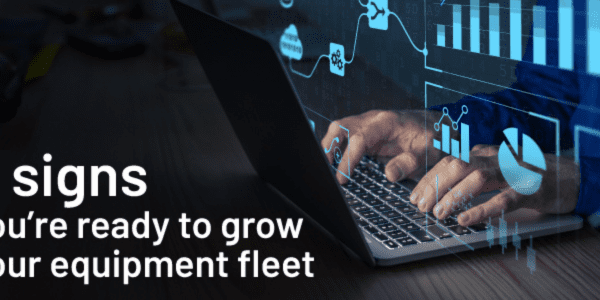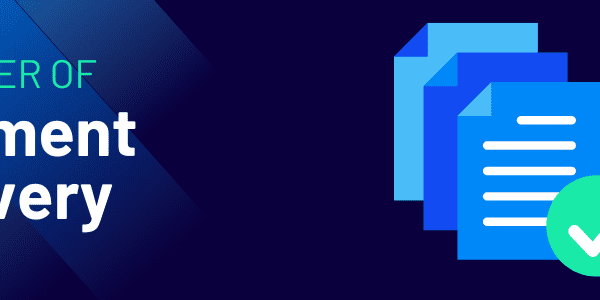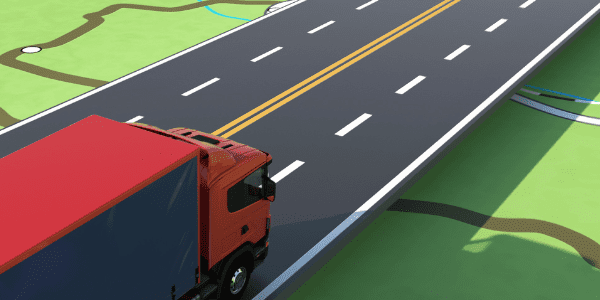
I spent most of last year traveling around the country to validate and implement MobileLink, a mobile equipment rental software. Despite having very similar implementation plans, I noticed that the companies who were able to effectively quantify their potential gains had a smoother rollout, higher adoption and were better able to achieve their initial goals. Having clearly-defined goals and a plan to achieve them allows for stronger messaging and alignment between management and end-users and the ability to measure success and make adjustments when needed. These are a few of the more common goals companies have when implementing mobile equipment rental software and the considerations that went into calculating the value of their opportunity:
Going Paperless
Cutting down on paper usage is often the first goal I hear from customers who are looking to implement mobile software. This particular pain isn’t unique to the equipment rental industry, but due to the nature of rental and liability, nearly every activity performed inside and outside a rental branch has to be documented somehow. So being able to electronically create and store these documents is an obvious value-add and it seems like it would be easy to measure, but it’s worth taking a closer look at where those savings will come from, and how much cost reduction you can expect.
Determine how many of your current processes use paper, and what percentage of those paper documents your mobile solution could replace with digital ones. This will give you a rough idea of what you could reasonably expect to save by going mobile, and provide an educated frame of reference for goal-setting.
Usage isn’t the only cost to consider either – the physical paper has to be managed, filed and kept somewhere accessible in order to be valuable. According to Record Nations, the average office employee spends roughly 20% of their time locating, retrieving and refiling paper documents. They go on to estimate that an electronic document management system can cut paper and paper-related costs by 93%.
Better Real-Time Communication
Another common goal when adopting a mobile equipment rental software is to improve operational flexibility via real-time communication. Most often the first focus is logistics. If users in the field can report deliveries and pickups as they happen, dispatchers in the branch can make informed decisions around hauling runs.
During a pilot test of MobileLink, my team and I rode along with a hauler on his morning run. On his second pick-up, he arrived to find the telehandler half-buried in the mud. The situation was reported via MobileLink and a dispatcher was able to reroute the driver to another pick-up, knowing he would have the bed-space because the buried telehandler could not be retrieved at that time. It isn’t hard to calculate the value of cutting missed pickup opportunities.
Hauling isn’t the only area where added flexibility can add value, however. If a driver can report equipment damage at the time of pickup, service managers can act on that information long before the equipment returns to the branch. During the same pick-up I mentioned above, photos of the damage and situation were reported upon arrival. This allowed the branch to immediately organize the resources needed to pull the telehandler out of the mud and start ordering parts. All of that adds up to a faster turn-time, which means higher utilization, which means more revenue (not to mention the evidence needed to recoup customer-damage costs).
Improve Efficiency in the Rental Branch
The last goal is to improve operational efficiency within the rental branch itself. This may seem a bit vague, but it centers on the speed and quality of communication between different areas of the branch. Whether it’s the counter talking to the service department, service to billing or billing to dispatch, every point in the business process where manual communication is required is a point where the process is exposed. Incomplete or incorrect information leads to extended timelines and costly mistakes. A look at the number of credit memos and re-bills in the system should start to give you an idea of how much can be gained by ensuring a quality hand-off. An integrated mobile solution should automate and secure the transfer of information from the point of capture to the point of consumption. For instance, information captured by the yard worker picking and staging equipment should automatically and immediately be made available to the invoicer who writes the contract.
Automating communication creates other opportunities as well. During one of our observation visits, we watched a yard worker cross the yard to bring equipment check-out and check-in sheets dozens of times over the course of the day. During this time he had been using a fitness app to track his steps, which reported that he had walked roughly 8 miles over the course of his workday. At average walking speed, this means he spent a little over 2 hours, or 25% of his day just walking back and forth across the yard to bring information to the office. If a mobile application can save him that physical trip across the yard that is 25% more time he can spend turning equipment.
Conclusion
Setting goals is an important first step to defining success with a software implementation, but it is important to understand the opportunities that make those goals achievable. This will allow you to set smart goals and give you the ability to measure progress and adjust the plan to ensure that you get the most out of your rental equipment software. Every rental branch is different, we just covered some of the more common goals and the opportunities that make them up. What’s your opportunity look like?
Written by Ken Kimura
Product Engineer at Wynne Systems





